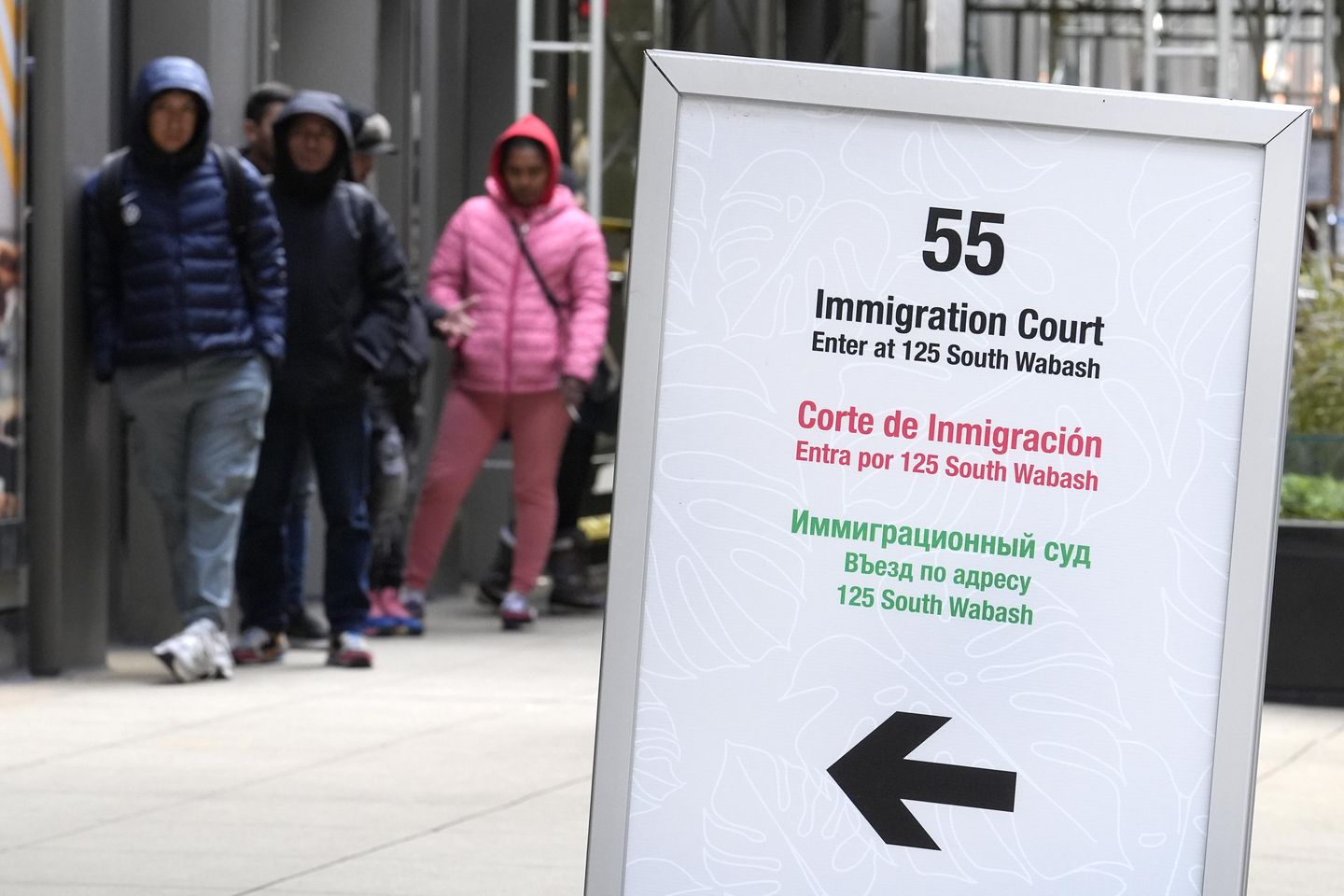
For 17 years, the government had been digging a hole on immigration, steadily building up a massive backlog of 4 million cases in the immigration courts.
Since President Trump took office, the government has finally begun to eat into that backlog, cutting it by 115,000 cases since Inauguration Day.
While a relatively small change, it’s symbolically huge, serving as another yardstick for just how quickly the new administration has solved the border chaos that plagued former President Biden.
“This is the first time since 2008 that the backlog has actually decreased,” a senior official told The Washington Times. “It’s being driven almost entirely by border policies which have reduced new cases.”
Known officially as the Justice Department’s Executive Office of Immigration Review, the immigration courts had averaged more than 100,000 new cases a month over the last nine months of 2024, as illegal immigrants continued to stream into the U.S.
In February and March, the first two months fully under Mr. Trump, the number of new cases dropped below 30,000.
The result is breathing space for the judges, who managed to complete roughly 60,000 cases each of those months, or double the intake rate.
“In other words, President Trump’s policies to secure the border have been an overwhelming success and helped stop an historic influx of illegal migrants,” Justice Department spokesman Gates McGavick said. “This has allowed EOIR to effectively address the large backlog of immigration cases that the prior administration’s policies created.”
Immigration courts are where unauthorized migrants can challenge their deportations, or request bond to be released from immigration detention.
They get far less attention than the border and interior enforcement, but experts say they have long been a problem. Migrants would come knowing that their court dates wouldn’t come for years, meaning they had a chance to burrow into communities and live and work until then.
Some unauthorized migrants who crossed the border during the Biden years were being given immigration court dates a decade in the future.
While much of immigration enforcement has been controversial, there’s been a general bipartisan consensus for years to add more personnel to the immigration courts. Congress has added enough funding to go from about 250 judges a decade ago to about 700 now.
One outcome is that EOIR now completed about 60,000 cases a month, up from about 12,000 a month in 2015.
But that still wasn’t enough to keep up with the massive numbers of border crossers. In fiscal 2023, for example, the courts saw 1.2 million new cases filed. That rose to 1.8 million last year. Judges only completed 527,000 cases in 2023 and 704,000 cases last year.
Now, with the new flow down, the judges are completing more than twice as many cases as are coming in.
“You’re now in a situation where the immigration court has reached stasis, where the bathtub is as full as it’s going to get and as you start opening the drain it’s going to drop,” said Andrew “Art” Arthur, a former immigration judge who’s now with the Center for Immigration Studies.
He said that means migrants get decisions faster. Those who actually deserve asylum can get on with their lives sooner, while those whose cases are bogus can get deportation orders faster.
The faster those deportation orders come, the more chance there is that Homeland Security can actually carry out the deportation, Mr. Arthur said.
The Washington Times sought comment from immigration-rights groups for this story.












